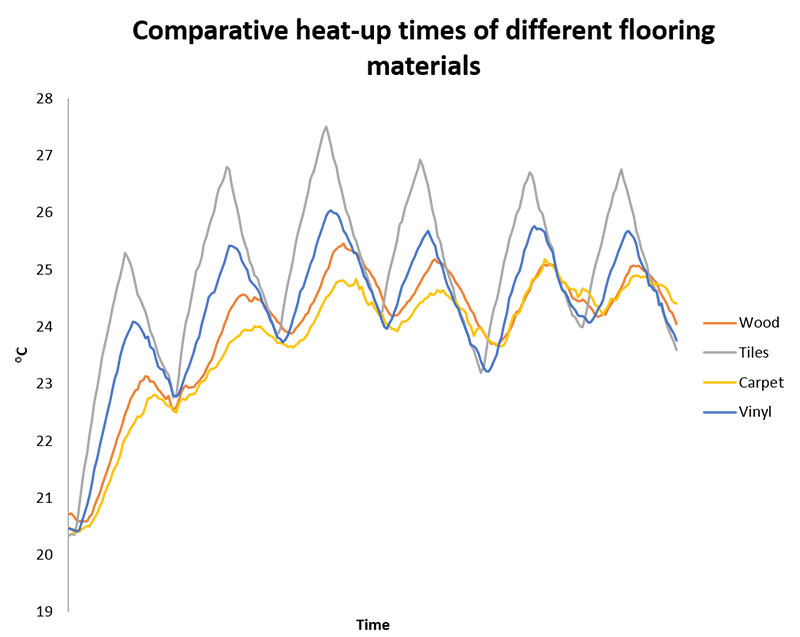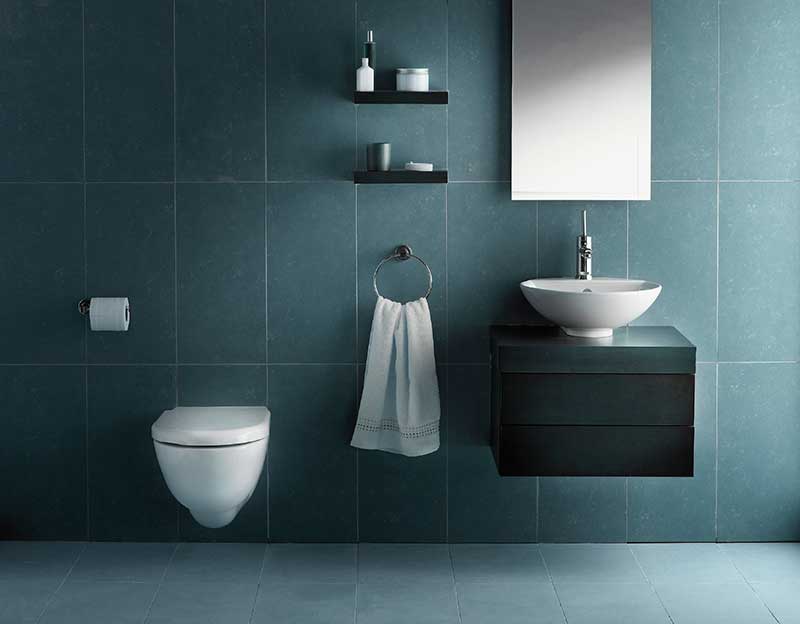In order to understand how the heating costs are impacted by the insulation, let’s start with defining what “ramp-up time” is. The “ramp-up time” is the time taken for the heated floor to reach the desired temperature. During the ramp-up time, the underfloor heating system will be running at 100% power. Once the floor heating system has reached the desired temperature, it will only have to maintain that temperature by cycling on and off meaning it uses much less power than during the initial ramp-up time.
THE FASTER THE FLOOR HEATS UP, THE CHEAPER THE SYSTEM IS TO RUN
The faster the system heats up, the less power it uses making it cheaper to run. To achieve a highly responsive system and low heating costs, you should pay close attention to insulation (among other things) and ensure it is up to sufficient levels.
Furthermore, heating your home when you need it and where you need it is now possible with the Warmup 4iE® Smart WiFi thermostat. The SmartGeo™ feature of the 4iE® allows your thermostat to heat the house when you are approaching it and to stop the system when you are leaving it. The 4iE® is more than a programmable thermostat, it is a Smart device. Warmup invented it to that you would not have to touch it.
HOW TO USE UNDERFLOOR HEATING EFFICIENTLY?
At Warmup’s Research and Development Center, we are constantly testing to see the best way to run underfloor heating and to provide the easiest and most convenient way to reduce the heating costs involved with running the system. It quite often reveals some noteworthy results. Our extensive research conducted on the impact of proper insulation on energy usage has shown that quality insulation is key to improving your ramp-up times and hence reducing heating costs.
Upon testing, we concluded that when using Warmup Insulation Boards in conjunction with same-brand underfloor heaters, floor heat-up time was cut significantly. The floor can heat up in as little as 20 minutes when using insulation compared to over 2 hours on an uninsulated subfloor!
That not only constitutes to an impressive saving on heating costs but also means the time it takes for your floor to be warm and toasty, which is the main reason to have underfloor heating anyway, is significantly faster.
INSULATION MAKES A DIFFERENCE ON HEATING COSTS
With electric underfloor heating, the best place to install insulation is right beneath the heating system. The insulating material will stop the heat from spreading downwards, reflecting it back up to the floor finish instead. This is particularly pertinent when the subfloor is concrete as a non-insulated base can dramatically delay the heating effects from being felt through the final floor finish.
Here are some guidelines on the floor ramp-up (heat up) times for Warmup Underfloor Heating with different Subfloor construction:
| Subfloor Construction | Heat-up Times |
| WBP Plywood | 45 min |
| WBP Plywood with Warmup Insulation Board | 20 min |
| Insulated concrete (insulation under screed) | 2-5 hours |
| Un-insulated concrete | 2-8 hours |
| Concrete with 10mm Warmup Insulation Board | 25 min |
| Concrete with 50mm Warmup Insulation Board | 20 min |
Warmup currently offers two types of insulation to be used together with their products. The Warmup 6mm insulated underlay is a thin yet efficient thermal barrier that also reduces contact noise and resists moisture. It has been specially developed to complement the Warmup Foil Heater under soft and resilient floor coverings such as carpet, vinyl, and linoleum.
The Warmup Insulation Board, on the other hand, not only directs the heat to where it needs to be but doubles up as a sturdy tile backer board for increased heater stability. Made of extruded polystyrene, the board is faced on both sides with fiberglass mesh embedded into a thin cement polymer mortar. The board is tough and water-resistant and can bear impressive weight loads of 30 tonnes per square meter. It is available in varying thicknesses and is suitable for most applications.
Try our Underfloor Heating Product Selector to find the right products for your project.





